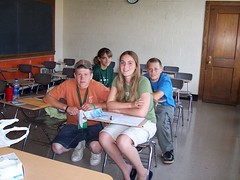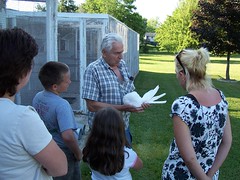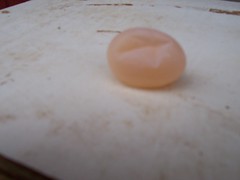I'm a novice when it comes to ornithology in general but I'm a bit more experienced in the subject of domesticated pigeons. This is an article I wrote for my club's newsletter:
One of the more common questions that I've heard asked by novice pigeon fanciers is “What sort of loft should I build?” While I don't know of a definitive answer, I'll try to outline some of the guidelines I would consider in designing a loft were I to build a new one from scratch.
1.)
Study what other people have built. The best way to get good ideas for a loft is by studying what others have done before you. Find out what other people consider their good ideas and what they would do differently if they started over.
There are sometimes special considerations in building a loft depending on the breed you're keeping. With muffed breeds, you want to have perches that sit away from the wall. This keeps the birds from breaking off their muff feathers on the wall. So, if possible, find a breeder of the breed you're interested in getting and ask them to see their loft.
A little bit of time spent looking at what others have built can pay handsomely in a loft that's easier to maintain and that's healthier for your birds.2.)
Spend the minimum amount that you can possibly spend. For a novice especially, you're going to learn things as you progress. Building an elaborate and expensive loft simply commits you to a configuration that you may later learn is impractical and possibly makes things more difficult than they need to be.
Don't misunderstand me; I'm not advocating building a ramshackle loft. Goodness knows pigeons have a poor reputation as it is—we don't need people building eyesores to house their pigeons. I just wouldn't invest heavily in a first loft; you'll learn (we all do) as you go what works and what doesn't. Why commit yourself before you have to?
One easy way to save expense on a loft is to modify an existing building. Many fanciers build a loft in their garage. Building in the corner of a garage gives you two of the walls you'll need for the pen.
3.)
You'll probably want at least two pens. Most fanciers with whom I am acquainted usually have some unmated (sometimes called “odd”) pigeons around. Either these are young pigeons that are weaned but not mated or they may have an odd male or female that they're hanging on to because they're looking for a good mate for the bird. Unmated pigeons in the loft with mated pigeons will simply disrupt your breeders.
A second pen also gives you the luxury of splitting up your pigeons after the breeding season. Being able to separate the males from the females helps to control the population of your flock. If you're doing things right, you will eventually have a need to control the size of your flock.
4.)
It's probably not possible to install too many perches. Perhaps you've heard the phrase “pecking order”. This phrase actually has a basis in science. A scientist studying the social organization of a flock of chickens found that in every flock there was one bird that could peck any other bird in the flock and the other bird would not peck back. And in every flock there is a
chicken that any of the other chickens can peck and this poor animal will not return the pecks. In between there was a very rigid hierarchy of animals which were allowed to peck back at some birds but not allowed to peck back at others.
Pigeons do not have as rigid a pecking order as is found in chickens but there is some pecking order in pigeons. And scientists have also identified a certain amount of territoriality in pigeons—especially when it comes to their nest box and their perch. Pigeons will defend the perch they're on from encroachment by other pigeons. This behavior is referred to be ornithologists as “perch right”. Therefore the more perches are available the less likelihood there will be fighting. That is if two birds are arguing over which of them is allowed to perch on a particular perch they're less likely to fight if there are plenty of other perches available.
Along the same lines, the more you can delineate the boundaries of nest boxes for your birds, the more harmonious relations will be among the pigeons. If you build a long, narrow nest box with room for three pairs of pigeons, don't be surprised if only one pair ends up roosting in the nest box no matter how many nest bowls you put in. In common areas of the loft (the floor for example) most pigeons aren't aggressive and they'll not fight much. But when it comes to nest boxes and perches, pigeons can be extremely territorial and aggressive.
Nest boxes and recommendations on them are the material of another article so I won't dwell on that subject in this article.
5.)
Light and ventilation are your friends. I recently heard someone refer to sunlight as “Nature's Disinfectant.” And I suspect they're right. Sunlight dries things up. When things are dry in the loft, the likelihood of nasty bacteria and viruses propagating is greatly diminished.
Likewise good ventilation helps to keep things dry. The bacteria and viruses that will cause your pigeons to be sick can't live in a dry environment.
There are other more specialized subjects related to building a loft. For example, if you ask a racing fancier about traps you may get a very long dissertation on the relative merits of different types of traps. Hence, again, probably the best thing you can do before building a loft or a pen is to look at the lofts of experienced fanciers. Most fanciers don't mind showing their loft to another pigeon fancier every now and again.
Powered by
ScribeFire.




